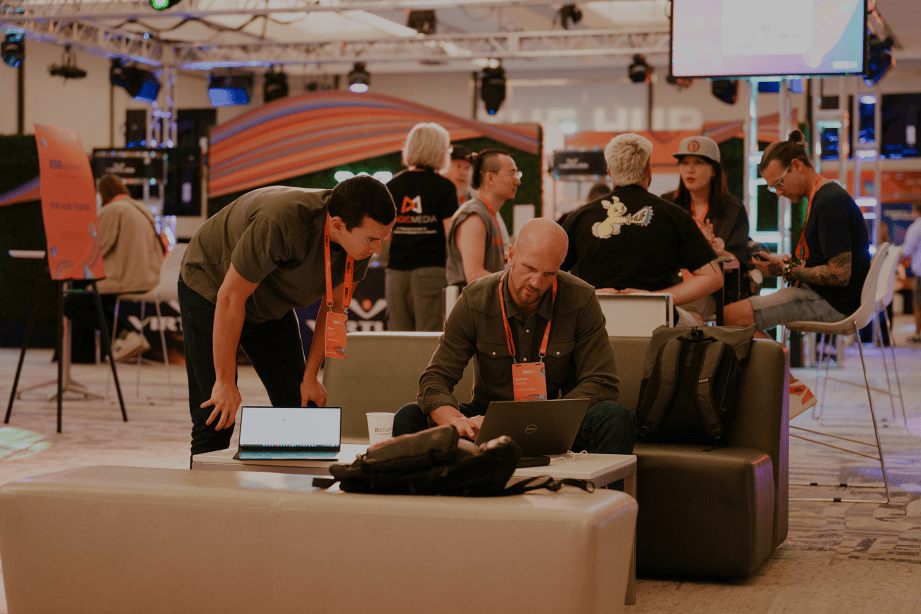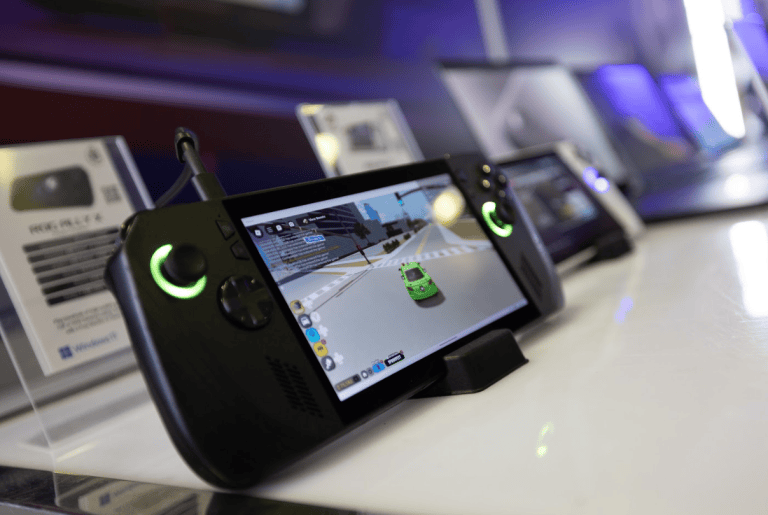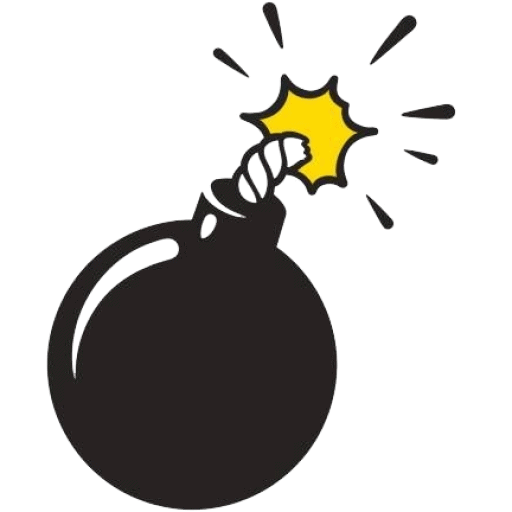The next time you sit through a game’s endless credits, remember this: every name belongs to a piece of a larger machine. Today’s blockbusters aren’t built by one studio alone but by a global network of specialists. These are co-development teams that quietly power art, audio, QA, localization, live ops, and support. This network has become the connective tissue of modern production, enabling publishers to ship across more platforms with fewer in-house staff and steadier pipelines.
The way games are made has shifted. Smaller cores, bigger ambitions, and tighter budgets demand collaboration at scale, and external development is no longer a fallback…it’s the model. With XDS Vancouver approaching, we’ve mapped the landscape: how partnerships begin, how live ops run, what consolidation and AI mean in practice, and Canada is quickly becoming a global hub for co-dev. This is the first part of a series spotlighting the quiet powerhouse behind modern games, and how its role is only getting stronger.
What “external development” is and why it’s everywhere
For those readers not familiar the external development is the network of specialized partners that help build and run today’s games. It includes engineering and co development, art and animation, audio and voice, functional QA and localization QA, translation and localization, player support and community management, and a growing list of niche capabilities. It’s a network of game studios that often are in the shadows of the biggest games we play. Supporting a lead studio from concept to delivery and beyond.
Across AAA, AA, and live service titles, external partners let studios scale up for content spikes, accelerate multiplatform launches and ports, and add highly specialized skills such as photogrammetry, facial rigs, or around the clock support without carrying permanent headcount.
The External Development Summit in Vancouver has become the community’s annual heartbeat, connecting buyers and suppliers, publishing market insights, and raising the bar for professionalism through a curated B2B format, peer led sessions, and a clear code of conduct.
The External Development Value Chain
So before a series of articles on co-development let’s dive into the basics of a creative and technology service Canada is at the forefront in delivering.
At its core, external development is when other studios step in to help make a game. They are not replacing the main team, but working right alongside them. These partners can cover almost every part of game development. Engineers and co-dev teams handle the coding: they build gameplay systems, connect online features, or port the game to new platforms. Art and animation teams bring characters, environments, and effects to life, making sure the game looks the way players expect. Audio and voice teams record dialogue, design sound effects, and produce music so the game has personality and emotion.
On top of that, there is Quality Assurance, or QA, which is the process of testing the game. Functional QA looks for bugs and makes sure the game runs correctly, while localization QA checks translations and voice lines so the game feels natural in every language. Performance capture is another piece, where actors’ body movements, faces, and voices are recorded together to create believable characters. Player support and community management keep players happy after launch by solving problems and moderating online spaces. Finally, specialty groups can step in for unique needs like trailers, cinematic cutscenes, advanced scanning, or accessibility testing.
When it comes to paying for this work, there are a few standard approaches. Time and materials is where you pay for the actual hours worked, which is useful for early experiments or ongoing updates. Fixed-fee milestones are when the partner delivers specific content for a set price, good for projects with clear goals. Full-time equivalent augmentation is when certain people from a partner studio join your team for a while, almost like temporary staff. With all of these pieces working together, external development allows even the biggest games to be built faster, smarter, and at a scale no single studio could handle on its own.

Pre Production and Planning
Before a game partner even starts making art, code, or audio, there has to be a solid plan. The studio first figures out what skills they need. Maybe it’s extra 3D artists, a team that can handle multiplayer code, or testers who can check translations. To make sure the partner is the right fit, studios often run a “pilot” project. This could be something small like a single character model or a short demo level. That test shows if the partner works well with the tools, deadlines, and style of the main studio. Security is also checked right away so that valuable code, art, and player data are kept safe.
Once the test is good, contracts are signed. A master services agreement sets the big picture rules, while statements of work get into the details for each job. These explain who owns the finished work, how credits will look, and what rules apply if unions or voice acting are involved. They also set deadlines (called milestones), what happens if a job gets canceled, and how changes can be made without confusion.
Finally, the pipeline is built. Think of this as the workflow or assembly line. Version control tools like Perforce keep track of every file and change so nothing is lost. Project trackers such as ShotGrid or Jira organize tasks and feedback, while Confluence acts like a shared notebook. These connect to the game engine so everyone is working on the same build. Clear naming rules, review schedules, and automated builds keep the whole process smooth. With this foundation in place, partners can plug in and start producing quickly without slowing the project down.
Core production service lines (the “Lines of Service”)
Once the planning is done, the real building starts, and this is where all the different lanes of game development come together. Engineering and co-development teams handle the coding. They write the gameplay systems, create tools for designers, connect multiplayer and networking, and even move titles between engines or platforms. They are also the ones who optimize performance so the game feels smooth and responsive, and they handle ports or remasters to bring older games to PC or console in upgraded form.
Art and animation teams take ideas and make them visual. Concept art becomes characters, props, and environments. Rigging makes those models ready to move, while animators bring them to life with movement, expressions, and combat. Specialists then add effects and lighting to make the world look believable. Sometimes teams use scanning or photogrammetry to capture real-world detail. Beyond in-game assets, they also produce marketing art and screenshots for store pages and trailers.
Audio and voice teams give the game its sound. They cast actors, record lines, create original music, design sound effects, direct recording sessions, and deliver everything in the proper format and loudness so it sounds great on every platform. Localization and localization QA make sure the game works globally by translating text, keeping terms consistent, checking cultural fit, and watching for platform or age-rating rules. Functional QA focuses on testing, building test plans, catching bugs, and checking performance and compatibility. They also help with submissions to make sure the game can actually release on consoles or platforms. During live service, QA supports patches and seasonal events to ensure updates don’t break the game.
Player support and community management come into play after launch. They provide 24/7 help in multiple languages, moderate online spaces, run help centers, and track feedback to reduce repeat issues. Surrounding all of this are specialty services that can be brought in when needed, such as motion and performance capture stages, advanced scanning, UX research, economy and data consulting, cinematic production, accessibility testing, and cloud test labs.
Together, all of these services make it possible for studios to build games at scale while keeping quality high. It is also why modern game credits often run longer than a movie’s. There are simply that many people and teams involved in bringing a game from concept to launch and beyond.
Post Launch Live Ops
Releasing a game is not the finish line. It is more like the start of a second phase where the focus shifts from building the game to keeping it alive and exciting. Players expect fresh content, so teams plan regular updates that bring in new features, limited-time events, and cosmetic items such as skins or outfits. These updates keep people coming back week after week. Because the workload can change so quickly, studios often rely on external partners who can scale up fast when a new event is coming and then step back once things slow down.
Every update also has to work globally, so localization and localization QA make sure that new text, dialogue, or features are ready in every language at the same time. Player support keeps the community running smoothly by answering tickets, moderating online spaces, and protecting players from toxic behavior. Behind the scenes, analysts study player data to see which updates are working and where people are losing interest. Meanwhile, external partners help roll out hotfixes, balance changes, store updates, and scheduled events through the same shared pipeline that was used before launch. That setup lets studios deliver new content safely and quickly without breaking the live game.
How Partners Actually Help Ship Games
The PC release of Returnal shows how specialized help pays off. Housemarque worked with Climax Studios to bring the game to Windows and to add PC focused features such as ray traced reflections and modern display support. The core team stayed on its roadmap while specialists handled the demands of the new platform. Large productions tell a similar story at a bigger scale. Starfield relied on many external studios across engineering, art, audio, and QA. Snowed In Studios in Ottawa provided long term engineering and production support, a good example of how coordinated networks help massive games hit quality bars and deadlines. Expert porting expands a franchise without harming quality. Virtuos earned its reputation through high profile work such as Dark Souls Remastered on Nintendo Switch. Global launches also depend on language experts. On Baldur’s Gate 3, external LQA teams handled specific languages so the game shipped with polished text and audio worldwide on day one.
The Buyer’s Playbook (Studios & Publishers)
Picking the right external partner is a lot like picking teammates for a big project at school: the fit matters. You don’t ask the math whiz to draw the poster, and you don’t ask an art house to lead a complex port. The first step is running a pilot. This is a short test inside your own tools and source control so you can see how the team actually works under real conditions. It shows you their quality, how they communicate, and how quickly they can adjust. At the same time, you check if their security is up to standard, since you don’t want your files or player data at risk. That means looking for safe remote setups, strict repo access, two-factor authentication, and a clear plan if something goes wrong.
Contracts are where you remove confusion. A good statement of work explains exactly what “done” means, who reviews what and when, what formats will be delivered, how acceptance works, and what happens if changes are needed. Payment also has to match the type of work. Time and materials is useful for ongoing updates or when you’re still figuring things out. Fixed-fee milestones are best when you know exactly what you want. Full-time equivalent augmentation is when you bring in specific people from a vendor to sit inside your team for a while, often when you need certain senior skills.
Once the work starts, you track results with a few smart metrics instead of drowning in data. These include bug containment, how often deliveries are accepted on the first pass, turnaround times, performance budgets for things like frame rate and memory, the severity of localization issues, and even player-facing measures like customer satisfaction. Just as important is how quickly a partner can ramp up capacity if you suddenly need more. Finally, the way you connect partners to your pipeline matters. You give them their own Perforce branch and continuous integration access, but with strict permissions. You mirror your code and art style guides so everything feels consistent. Automated checks catch problems early, daily reviews keep everyone aligned, and all feedback is stored in one shared system like Jira. When you treat vendors as teammates with the right guardrails, delivery becomes steady and predictable, which is exactly what a live game needs.

The Vendor Landscape
When people talk about the “most integrated” partner network in games, they usually mean large external development vendors like Keywords Studios. Keywords Studios owns over 70 studios and locations across 26 countries. Think of Keywords as a full toolkit under one roof: they cover creation, globalization, and player engagement from start to finish. If you need co-development or engineering, they’ve got studios like Climax, Snowed In, Game Sim, High Voltage, Heavy Iron, Smoking Gun, and The Multiplayer Group. If you need art, there’s VOLTA and Liquid Development. For audio and voice, there’s SIDE, Blindlight, and Syllabes. For QA and localization, Enzyme and other test groups plug right in.
Keywords Studios has seven studios in Canada. These studios are located in across Quebec, Ottawa, and Vancouver. They offer a range of services including game testing, creative services, and more. Because these teams all live inside the same company, they share processes, security standards, and pipelines, which makes cross-studio work smoother. In practice, that means you can spin up an art+engineering+LQA+VO package with one MSA, one vendor manager, and a shared set of tools and KPIs. It’s the closest thing to a “single vendor, many specialties” model that still scales to AAA.
Virtuos is another major player with a big global footprint. They’re known for ports and co-dev across PC and consoles, and they’ve built strong art capacity through Sparx*, Glass Egg, Black Shamrock, CounterPunch, and Volmi, plus a presence in Montreal. If you’re trying to launch on multiple platforms, especially Switch or PC with extra features – Virtuos brings a mix of engineering and especially art horsepower.
PTW Group (with SIDE, 1518, and Orange Rock) is a go-to for audio, VO, and global operations. SIDE runs voice recording across hubs like London, LA, Montreal, Shanghai, and Tokyo, while 1518 handles art and PTW proper delivers QA, LQA, localization, and player support.
Beyond the big networks, Room 8 Group (Dragons Lake, Solid Bash, PUGA, and more) and Amber offer solid co-dev and live-ops support, especially for mobile and cross-platform hybrids. For deep testing and certification at scale, Lionbridge Games and Testronic are long-time specialists that handle FQA, LQA, and platform checks across regions and time zones.
Finally, some partners focus on key specialties that level up realism and production speed. Animatrik (Vancouver/LA) and Beyond Capture (Vancouver/Montreal) provide motion and performance capture, face work, scanning, and virtual production stages used by top franchises. If you’re a buyer building a shortlist, the XDS supplier directory and XDS Connect are the fastest ways to search by line of service, region, and security posture – then line up a small pilot to prove fit before you scale.

Trends Reshaping External Development in 2024 and 2025
The way games get made is changing fast. Big publishers have merged studios, laid people off, and slowed down projects to reduce financial risk. That leaves small core teams still expected to deliver huge games. To make this possible, more of the work is handed to co-development partners who can scale up when needed and step back down during quieter periods. Instead of paying large in-house teams year-round, studios are turning fixed costs into flexible partnerships.
Artificial intelligence is also part of the story, but in practical ways. Art teams use AI to generate quick mood boards and rough ideas, then pass the real work to artists. Engineers use it for small things like test scripts, code suggestions, or sorting through log errors, but nothing goes live without human review and security checks. QA teams use AI to spot patterns in crashes or suggest edge cases to test. Localization blends machine translation with human editors and QA to get polished, native-feeling results. Even audio teams use synthetic voices for placeholder lines during development, but final recordings still come from actors. Studios now write clear AI rules into contracts: no training models on client assets, keep proof of where AI was used, and always follow union and consent rules for voice or likeness.
At the same time, technology expectations keep getting heavier. Unreal Engine 5 features like Lumen and Nanite create amazing visuals but also eat up performance budgets. PC players expect modern features such as ultrawide monitors, frame generation, and ray tracing on day one. Console makers have tougher certification rules, while crossplay, anti-cheat, and live updates add new challenges. That is why specialists like rendering engineers, porting experts, and security-focused QA teams are busier than ever.
Where that work gets done is changing too. Companies are pulling more work closer to home. Instead of outsourcing to the far side of the globe, nearshoring to places like Canada, Mexico, and Latin America has become common. The time zones line up better, IP protections are stronger, and visiting studios in person is easier. Security has also become non-negotiable. Vendors are expected to use locked-down systems, multifactor authentication, and detailed audit logs. Buyers now often ask for a one-page security summary during the first talks just to speed up approvals.
Money shapes the strategy as well. With fewer greenlit projects and higher quality bars, studios are betting on fewer but bigger releases. Live service games are leaning toward smaller, more frequent updates instead of massive expansions. Ports and remasters are popular because they bring in new revenue with less risk than building a brand-new game. Marketing budgets are tighter too, so vendors who can deliver not only assets but also trailers, screenshots, and capture sessions are more valuable than ever. Labor and voice rules are evolving, which means motion capture, dubbing, and voiceover work now need clear consent, proper credits, and careful handling of synthetic tools. This favors vendors who already understand union rules and likeness rights.
All of these forces reward integrated networks. Companies like Keywords can provide art, engineering, audio, QA, localization, and player support all under one structure. That means one contract, one set of tools, and one set of security and project management standards. For big publishers, having one accountable partner, plus a few niche specialists on the side, has become the safest way to deliver games at the level players now expect.
Canada’s Edge
Canada punches above its weight in external game development because it combines deep talent, strong IP protection, and generous tax credits. In provinces like Quebec, Ontario, and British Columbia, government programs such as the Ontario Interactive Digital Media Tax Credit (up to 40 % back on wages and some marketing costs) and B.C.’s new permanent tax credit that rises from 17.5 % to 25 % as of September 1, 2025 make development much more affordable for long projects.
The major cities of Vancouver, Montreal, Toronto/Waterloo, and Ottawa all offer different strengths, whether it’s game engineering, AAA-level art, audio, or QA. Canada also has one of the world’s highest film-and-game industries by production value. Because many Canadians speak both English and French, studios can rely on bilingual services for localization, voice-over, and QA unlocking easier global releases.
Another advantage is that Canada is a prime nearshoring partner for U.S. companies. With close time zones, shared culture, legal alignment, and favorable exchange rates, Canada provides faster, clearer communication than far-off outsourcing.
To make the most of it, studios should structure work wisely: send the right parts of the project, report time properly, and keep assets within the right province to remain eligible for credit. Set up clean pipelines and grant partners controlled Perforce access, automate checks, and use shared workflows to protect builds while keeping quality high.
When everything lines up (talent, incentives, and trust) Canada’s mix of skill, bilingualism, and tax support lets teams ship global-quality content faster and smarter without compromising on quality.
Partner Readiness in Practice
Teams move faster when everyone knows the rules from the start. The scope of work should be written in plain language so there is no confusion about what “done” looks like, who approves the work, and how any changes or fixes are handled. Everyone needs to be on the same page about where files go and how they are named so nothing gets lost. Tools like Perforce keep code and art under control, while Jira acts as the shared space for tasks, feedback, and blockers. Short, predictable review windows keep the flow steady and prevent endless back-and-forth.
Tracking the right numbers is what makes these partnerships measurable. Studios usually care about things like how many bugs are caught early, how often work is accepted on the first pass, how long deliveries take, whether performance budgets are being met, and how quickly a vendor can scale up when needed. On the support side, player satisfaction and how fast issues are solved also matter.
Security has to be built in as well. Partners are expected to use limited-access accounts, multifactor authentication, and secure virtual desktops when required. Contracts should also be clear about who owns the work, how credits are handled, how likeness and voice are used, and how AI can or cannot be applied. Finally, every project needs an escalation plan and regular check-ins so problems never sit too long without a fix.
Begin Your Journey
External development has grown from being a side option to being the backbone of how modern games are built. Smaller core teams, more advanced technology, and tighter budgets all push studios to rely on partners at the right time and in the right way. When the basics are clear (contracts, security, KPIs, and pipelines) co development is smooth and trustworthy. Canada continues to stand out as a hub for talent, incentives, and time zone advantages, while XDS Vancouver remains the best place to test and expand these partnerships. AI will play a role in making work faster and smarter, but people will always set the standard for creativity, culture, and quality.
For studios and publishers, the most reliable strategy is balance. Anchor with an integrated network like Keywords that can cover art, engineering, audio, QA, localization, and player support under one consistent system. Then, bring in specialized partners for niche needs when you want to push the edge on visuals, voice, or new features. Start small with pilots, scale what proves successful, and keep documentation and knowledge flowing back into the core team. Done right, this approach leads to fewer but better games, more consistent launches across platforms, and live operations that stay healthy without burning out the people making them. XDS is where many of these connections begin, but the results live on long after the show. The rest is execution.









